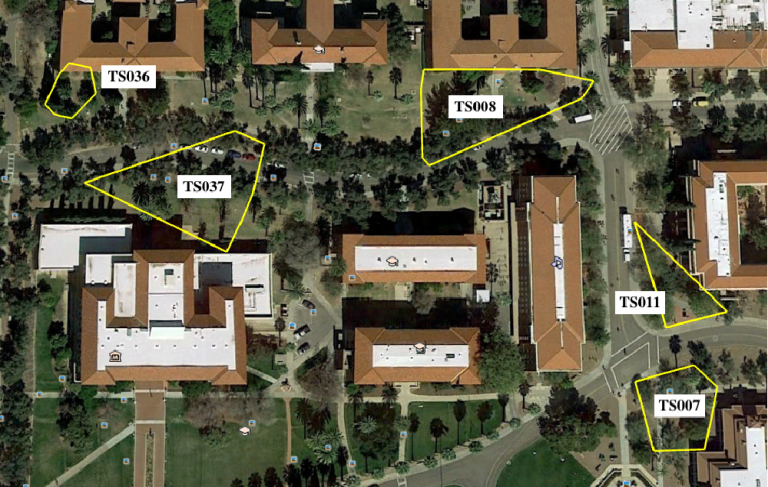There are many things that we hope to learn from using radio telemetry to track Sceloporus magister (Desert Spiny Lizards). Some of which include behavioral data, activity patterns, how these lizards thermoregulate, and where they prefer to spend their time in an urbanized habitat. We are working to determine many of these things, but so far, we only have some insight into the home ranges of five different S. magister we have tracked around campus.
These lizards that we tracked were in fairly close vicinity to one another. They were located on the north side of Old Main, the west side of the Old Engineering building, and on the south side of Yuma, Maricopa, and Gila residence halls. Although these were all very close to each other, none of their home ranges have overlapped. This information fits with the territorial behaviors that are known about them. If we were able to track a higher female population, it is likely that we would see more overlap. The lizards included in this data set were all male lizards.
Along with staying out of each other’s way, these lizards did not cross any roads or walking paths, except one located on the south side of the residence halls. It makes sense for them not to cross roads or walking paths, because it is an added danger that greatly increases the chance of their death. However, we have not figured out why this lizard chose to cross the road. We hope to be able to witness more lizards attempt this dangerous feat to try and determine why a lizard would cross the road in such a busy and urbanized area. Along with understanding why the lizard crossed the road, we hope to be able to determine and understand what makes a good area for S. magister to inhabit on campus, and hopefully more places will be able to be made lizard-friendly.


